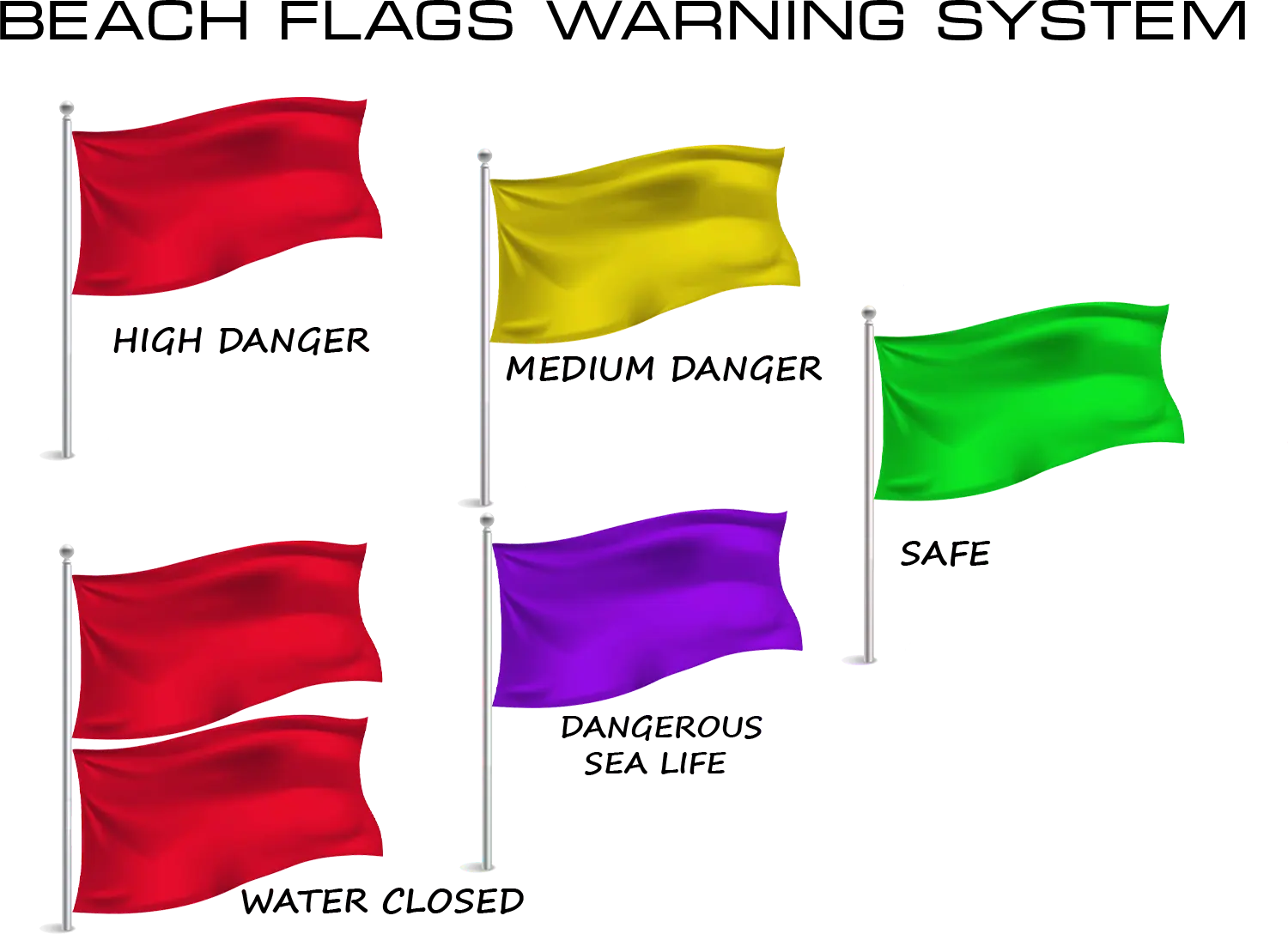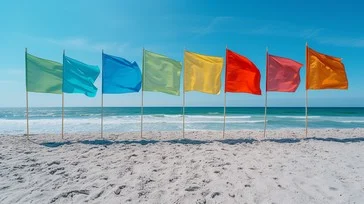The modern system of beach warning flags has been standardized by organizations such as the United States Lifesaving Association (USLA) and the International Lifeguard Federation (ILF). The United States Lifesaving Association is an American professional association of lifeguards that works to reduce death and injury in the aquatic environment. The International Lifeguarding Federation (ILS) consists of more than 100 organizations that also aim to improve water safety and prevent drowning. Beach flags serve to protect vacationers around the world by providing clear indications of water hazards. While there are local adaptations, many coastal regions have adopted this global standard since it was first introduced in the late 20th century. The system has expanded to include more detailed warnings about currents, surf conditions, and marine life.
Colors and meanings of flags used on beaches:
- Green flags signal safe swimming conditions, but as with any other ocean activity, caution should still be exercised;
- Yellow flags indicate moderate danger, such as currents, which are the cause of many rescue operations and accidents on the beach. Swimmers are advised to stay close to lifeguards;
- Red flags indicate a high level of danger with dangerous surf conditions, and double red flags mean the beach is closed due to extreme conditions;
- Purple flags warn swimmers of dangerous marine organisms such as jellyfish or stingrays. According to one source, purple or blue flags have helped reduce the number of accidents involving marine life by making beach-goers aware of potential threats.

In addition to single-color flags, there are also flags consisting of several symbols, namely: a yellow-red flag indicates a zone controlled by lifeguards. This means that it is allowed to swim in a certain area, which is usually indicated by two such flags showing the beginning and end of this zone, i.e. the swimming limits. If you ignore the zone and swim out of it, the rescuers will not be able to help you.
The flag warning system has had a significant impact on reducing the number of accidents. Studies show that public awareness of these flag systems has led to a significant reduction in drownings and other incidents on beaches around the world. In Australia, where beach flags have been used for decades, a 50% reduction in drownings was recorded from 2004 to 2021 due to the implementation of such measures on beaches with standardized warning flag systems. On average, the annual number of deaths on beaches due to currents is about 21, but these figures are constantly decreasing on beaches with the right flag system, which allows visitors to better navigate the dangers. In the US, studies have shown that beach flags reduce the number of accidents by 20-25% on well-organized beaches. On beaches in Mexico, the number of accidents related to strong currents decreased by 25% after the introduction of a color-coded flag system. Thus, these flags play a vital role in maintaining safety at popular beaches such as Cabo San Lucas, where surf conditions can change rapidly due to the geography of the Baja Peninsula.
